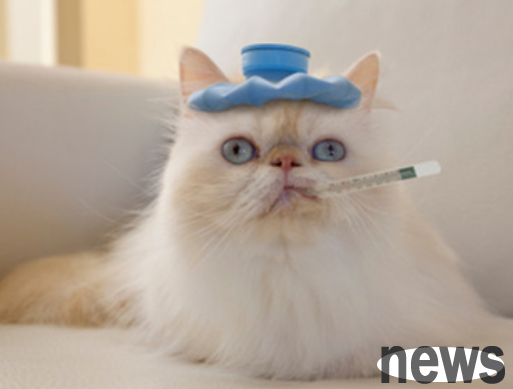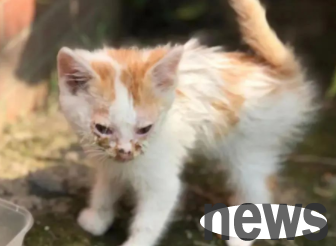1. Pathogen Cat levitra virus type 1 belongs to the family A herpes A virus subfamily, which is a linear double-strand DNA virus with a capsule. It has weak resistance to the outside world and is sensitive to acid and lipid solvents. It is ina...
1. Pathogen
Cat levitra virus type 1 belongs to the family A herpes A virus subfamily, which is a linear double-strand DNA virus with a capsule. It has weak resistance to the outside world and is sensitive to acid and lipid solvents. It is inactivated at 56℃ for 4~5 minutes, but it can last for 5 months and is infectious.
2. Epidemiology and pathogenesis
This disease mainly infects feline animals, among which 2 to 6 months of age are susceptible to young people, with an incidence rate of up to 100%, and a mortality rate of 20% to 50%. The virus spreads through direct contact and droplets, and enters the body through oral, nose, and numbing, which in turn causes lytic infection of nasal mucosal epithelial cells, and thus spreads to the conjunctiva, throat, trachea, and bronchus, resulting in local multiple necrosis. Detoxification begins 24 hours after infection, and the same number continues. In addition, the virus can replicate and proliferate in the Shenyin cells. Even after recovery, the virus can still lurk in the cat's trigeminal nerve node, causing chronic latent infection. The virus only retains the genome during the latent period, avoiding immune surveillance to the greatest extent, so that the virus can lurk for a long time without being removed by the body. This causes about 80% of cats to be infected with the virus for life. When the cat encounters stress factors such as estrus, childbirth, lactation, environmental change, steroid drugs, etc., it can cause the virus to reactivate and detoxify, and intermittently disperse the poison. Therefore, the sources of infection include cats during acute infection and cats whose chronic latent infections are eligible for each cat. In addition, this disease can also be transmitted vertically, resulting in fetal death or poisonous after birth. In addition, the herpes virus has formed an immune escape mechanism in its evolution, evading humoral immunity through syncytium, and evading body cellular immunity through molecules on the surface of the virus during the acute infection period.

3. Clinical symptoms and diagnosis
mainly cause acute upper respiratory tract diseases and eye diseases. Kittens often experience mucosal surface erosion, ulcers, rhinitis and conjunctivitis, among which corneal dendritic ulcers are considered to be diagnostically specific. Typical symptoms include fever, anorexia, serous eye and nose secretions, conjunctiva congestion, sneezing, which may also cause primary pneumonia and viremia, which may lead to systemic symptoms and death. It is often mixed with calicivirus, Chlamydia, Bosbacterium, Staphylococcus, etc., which causes multi-pathogenic respiratory syndrome. The upper respiratory tract symptoms caused by these pathogens are similar, and it is difficult to diagnose through clinical symptoms and requires laboratory testing.
3.1 Virus Isolation
Feline herpes virus can proliferate in F81 cells and produce cytopathic lesions, so this method can accurately reflect the presence of viruses with proliferation ability. However, feline herpes virus has weak environmental resistance, high requirements for virus preservation and time-consuming; more importantly, the asymptomatic virus detection results of cat isolation are not diagnostic, resulting in this method not being commonly used in clinical practice to confirm the diagnosis.
3.2 Serology
Although it can be diagnosed by serum neutralization test or ELISA detection of antibodies in serum, it cannot distinguish between vaccines and wild-toxic antibodies, and the antibody titers are not positively correlated with symptoms, so serological examinations are not very significant in diagnosis.
3.3 Molecular Biology
, including Putong PCR, Chou's PCR, real-time fluorescence quantitative PCR technology, etc., can be used for cat nasal branch detection. However, the sensitivity of this method is too high, and the test results may not be related to the disease state. If a PCR positive result may represent a small amount of virus emissions or a latent virus infection, it may not necessarily mean that the current symptoms are caused by the herpes virus. Viral concentration information detected by fluorescence quantitative PCR, such as high viral concentrations in nose or eye secretions, represents active viral replication and may be related to clinical symptoms, such as low concentrations represent latent infection. However, the existing PCR methods cannot distinguish between vaccine poison and wild poison infection, so the results still need to be judged and analyzed carefully.

4. Prevention and treatment of
4.1 Lysine
Lysine once became the prescription for nasal tracheal treatment in pet diagnosis and treatment institutions. However, clinical trials have shown that in cats with chronic herpes disease, lysine treatment can only be beneficial for daily lysine treatment throughout their lives. It is ineffective to treat upper respiratory tract inflammation and eye diseases caused by herpes virus infection in acute attacks or recurrences, and may even have an enhanced effect on the replication of herpes virus in cats. So this is just an adjuvant treatment, and to better control the condition, antiviral drugs may be necessary.
4.2 Interferon
Although relevant clinical studies have proved that interferon has therapeutic effects, the use of interferon in pet clinical practice has not been approved, and more clinical treatment trials are still needed to further evaluate the therapeutic effect of interferon on cat nasal branches.
4.3 Nucleotide anti-herpesvirus drugs
Such acyclic nucleoside analogs are commonly used in systemic treatment of human herpes A virus, including acyclovir, ganciclovir, penciclovir (and its prodrug famciclovir), which all require 3 phosphorylation steps to be activated. The first step must be absorbed by herpes virus and destroyed by thymus kinase in the virus. The next two steps require the host kinase to phosphorylate to form triphosphate compounds, which inhibits DNA polymerase and blocks DNA replication and radiate the antiviral effect. Different hosts will directly affect the efficacy of the drug. For example, although acyclovir is effective in treating cat nasal branches, it has low antiviral efficacy and low bioavailability. Increasing the dose has caused myelosuppression and nephrotoxicity to limit its use. Famiciclovir is the most widely used nasal drug in cats. It is a prodrug for the active compound penciclovir. However, famiciclovir needs to be deacetylated to be converted into penciclovir, but cats cannot be converted, so they can only increase the dosage to achieve therapeutic effect. This inevitably increases the risk of side effects.
4.5 vaccine
Vaccine immunization is an important means, but at this stage, the vaccine cannot completely stop viral infection, and can only reduce the viral load lurking in the trigeminal nerve and reduce the virus excretion. In terms of treatment, therapeutic drugs for cat nasal branches mainly include lysine, interferon, and nucleotide anti-herpes virus drugs such as acyclovir, famciclovir, penciclovir, etc.. However, due to the lack of diagnostic methods, there is controversy in the evaluation of drug effects.
5. Conclusion
Although cat nasal branch is not a severe infectious disease, its lifelong toxicity, chronic latent infection and recurrence after infection has resulted in no simple test method to measure this latent state, which has become a difficult point in clinical diagnosis and treatment. In short, the research on cat nasal tract is still in its early stages, but with more diagnostic methods applied to pets and continuous trials of currently available drugs, there is hope for a certain effective solution to diagnose and treat cat nasal tract in the future.